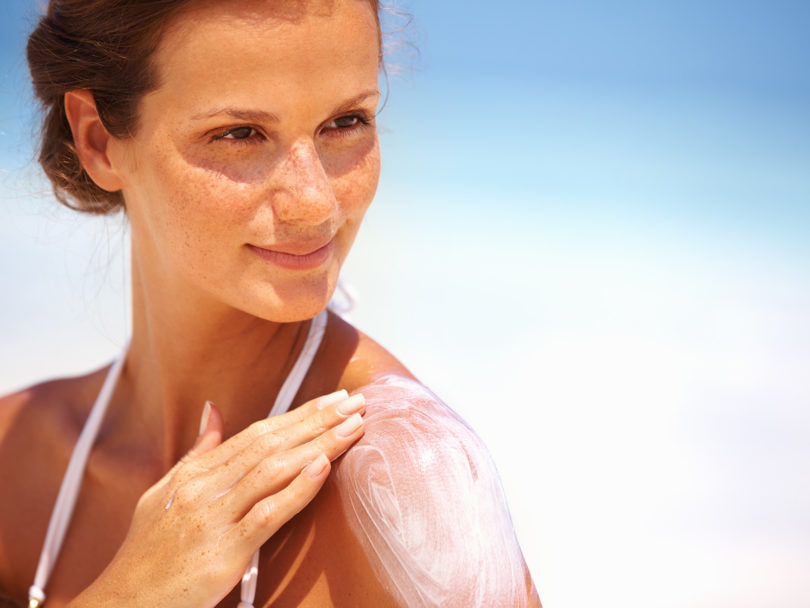Choosing a sunscreen can be maddening.
You want good sun protection, but at the same time, you want a sunscreen that’s safe for your family. With literally hundreds of options out there, how do you pick the right one?
Since 2007, the Environmental Working Group (EWG), a nonprofit environmental research and advocacy group, has been investigating and evaluating the effectiveness and safety of sunscreens.
In those 10 years, the group found, nearly three-quarters on sunscreens on the market don’t live up to their claims. Either the sun protection falls short of its promise or they overdo it on chemicals.
In the past several years, researchers have been warning of potential harm from some ingredients often found in sunscreens. Two ingredients of particular concern to researchers are retinyl palmitate, a form of vitamin A that may speed the development of skin tumors and lesions; and oxybenzone, which can act as a hormone disruptor in men and women. High concentrations of oxybenzone have also been found to be damaging to coral reefs.
The EWG recommends natural, mineral-based sunscreens with an SPF between 15 and 50. Reading labels is important – since 2013, companies can no longer use the term sunblock, because nothing blocks 100 percent of the sun’s rays. The FDA now puts sunscreens into two categories – chemical, which are absorbed into the skin; and physical barrier, which sit on your skin.
Here’s what to look for:
- “Broad spectrum” on the label. According to Dr. Judith Williams, a pediatric dermatologist at the Children’s Hospital of the King’s Daughters in Norfolk. Broad spectrum sunscreen protects the skin from ultraviolet B (UVB) and ultraviolet A (UVA) sun rays. Exposure to both types of UV rays can cause sunburn and skin damage that can eventually lead to skin cancer.
- A sunscreen with a sun protection factor, or SPF. But be wary: Very high SPF sunscreens aren’t always recommended, as they can give people a false sense of security to prolong their time in the sun and reapply less frequently. Williams recommends an SPF of 50 or higher. The American Cancer Society recommends people use a sunscreen with an SPF of at least 15, but the American Academy of Dermatology recommends 30.
- A sunscreen that’s a physical sun blocker over sunscreens that contain chemical ingredients. The minerals zinc oxide and titanium dioxide should be the only two “active” ingredients. Physical sun blockers may be safer than those with chemicals, Williams says.
- Some sort of antioxidant included, such as vitamin E, tocopheryl acetate, green tea or olive oil. Antioxidants help combat the free radicals that even zinc oxide and titanium dioxide create when they interact with the sun. Free radicals are pesky natural byproducts of chemical processes, and can cause damage to cells.
- Avoid parabens, synthetic or unlabeled fragrances.
- A sunscreen that’s water resistant. These ensure protection while you swim and play in the water, but make sure you reapply after drying off.
- Not everyone likes the pasty look that some mineral sunscreens leave behind. If you don’t want to go the natural, mineral-only sunscreen route, look for products that contain 3 percent avobenzone, the EWG says.
Sunscreens can break down over time, which may affect the amount of sun protection they’re actually giving you.
So check the expiration date on old sunscreen bottles to make sure the one you’re using is up-to-date.
Every year, the EWG puts out a list of sunscreens and ranks them according to safety. You can check out that list yourself at ewg.org sunscreen and see how your favorite sunscreen ranks.
One thing you might notice with some of the best-ranked sunscreens, however, is the higher price tag. When you’ve got multiple kids going through buckets of sunscreen at the pool and beach, it’s hard to bring yourself to drop $20 on a small tube of sunscreen. This year, the EWG recommended eight sunscreens that can be widely found at drug and chain stores and won’t break the bank, so they say. “All of these products listed get a green, or highest rating, by EWG,” says EWG senior analyst Sonya Lunder,
Those sunscreens include:
- Aveeno Baby Continuous Protect Sensitive Skin Lotion Sunscreen, SPF 50
- Babyganics Mineral-Based Sunscreen Lotion, SPF 50+
- Bare Republic Clearscreen Sunscreen Gel, Sport, SPF 30
- Bare Republic Mineral Sunscreen Lotion, Baby, SPF 50
- Blue Lizard Australian Sunscreen, Baby, SPF 30
- CeraVe Baby Sunscreen Lotion, SPF 45
- Goddess Garden Organics Facial Natural Sunscreen Lotion, SPF 30
- Neutrogena Pure & Free Baby Sunscreen, SPF 50



